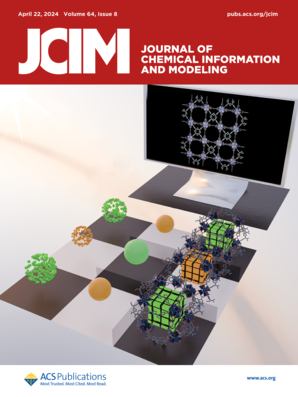通过最大化包含最优的概率的批处理贝叶斯优化。
IF 5.6
2区 化学
Q1 CHEMISTRY, MEDICINAL
引用次数: 0
摘要
批处理贝叶斯优化(batch Bayesian optimization, BO)可以从大量的化学文库中高效地识别出性能最好的化合物,从而加速分子设计。现有的批量收购设计策略旨在平衡勘探和开发。这通常涉及优化非加性批量获取功能,需要通过近视构建和/或多样性启发式进行近似。在这项工作中,我们提出了一种由纯开发驱动的离散优化获取策略,qPO(多点最优概率)。qPO最大化了批次包含真正最优的概率,它被表示为单个获取分数的总和,从而规避了优化批次获取函数的组合挑战。我们将提出的策略与平行汤普森抽样区分开来,并讨论了它如何隐含地捕获多样性。最后,我们将我们的方法应用于大型化学文库的模型引导探索,并提供经验证据,证明它在批处理贝叶斯优化中与其他最先进的方法竞争并互补。本文章由计算机程序翻译,如有差异,请以英文原文为准。
Batched Bayesian Optimization by Maximizing the Probability of Including the Optimum.
Batched Bayesian optimization (BO) can accelerate molecular design by efficiently identifying top-performing compounds from a large chemical library. Existing acquisition strategies for batch design in BO aim to balance exploration and exploitation. This often involves optimizing nonadditive batch acquisition functions, necessitating approximation via myopic construction and/or diversity heuristics. In this work, we propose an acquisition strategy for discrete optimization that is motivated by pure exploitation, qPO (multipoint Probability of Optimality). qPO maximizes the probability that the batch includes the true optimum, which is expressed as the sum over individual acquisition scores and thereby circumvents the combinatorial challenge of optimizing a batch acquisition function. We differentiate the proposed strategy from parallel Thompson sampling and discuss how it implicitly captures diversity. Finally, we apply our method to the model-guided exploration of large chemical libraries and provide empirical evidence that it is competitive with and complements other state-of-the-art methods in batched Bayesian optimization.
求助全文
通过发布文献求助,成功后即可免费获取论文全文。
去求助
来源期刊
CiteScore
9.80
自引率
10.70%
发文量
529
审稿时长
1.4 months
期刊介绍:
The Journal of Chemical Information and Modeling publishes papers reporting new methodology and/or important applications in the fields of chemical informatics and molecular modeling. Specific topics include the representation and computer-based searching of chemical databases, molecular modeling, computer-aided molecular design of new materials, catalysts, or ligands, development of new computational methods or efficient algorithms for chemical software, and biopharmaceutical chemistry including analyses of biological activity and other issues related to drug discovery.
Astute chemists, computer scientists, and information specialists look to this monthly’s insightful research studies, programming innovations, and software reviews to keep current with advances in this integral, multidisciplinary field.
As a subscriber you’ll stay abreast of database search systems, use of graph theory in chemical problems, substructure search systems, pattern recognition and clustering, analysis of chemical and physical data, molecular modeling, graphics and natural language interfaces, bibliometric and citation analysis, and synthesis design and reactions databases.

 求助内容:
求助内容: 应助结果提醒方式:
应助结果提醒方式:


